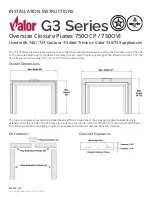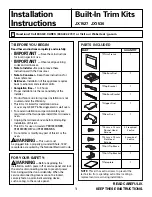
Step Two: Smart Seal Harness- Connecting the
Temperature Sensor(s)
The shaft seal temperature sensor is pre-attached to the black
SmartSeal harness cable. It needs to be connected to the water injection
fitting on the SureSeal being used. Connect the harness connector to the
MCU then route the sensor cable to the shaft seal. Twin engine systems
have two harnesses included, one for each SureSeal.
To connect the sensor to the injection fitting, remove one of the clamp
screws (philips head screw driver and 5/16 wrench required) and open
the clamp. Reassemble the sensor clamp around the shoulder of the
fitting just below the water pick-up hose attached to the fitting. Tighten
fully and check that the sensor is secure. Dress the cable(s) back to the
MCU to avoid snagging/accidental damage. Screw-mount zip ties are
recommended for wire management. If additional wire is needed, a 10M
extension cable is available. Excess wire should be bundled and
secured. Sensor cables
CANNOT BE SHORTENED.
Step Three:
Connecting The Neutral Safety Switch
(For Non- NMEA 2000 Vessels)
An In-Gear connection is required on vessels not equipped with a NMEA
2000 network. For a twin engine vessel, both in-gear connections must
be made, one for each transmission. Typically, the connection is made
using the Neutral Safety Switch (NSS) installed in the transmission but, if
necessary, the connection can also be made at the helm shifter control.
See following diagrams for both types of connections.
The grey harness cable is used for the NSS. Connect the white
wire to
the NSS and the brown wire to the NSS - terminal. Route and
dress the NSS cable to the MCU. NSS cables can be shortened as
necessary. Unused NSS cables (NMEA 2000 applications) can be cut but
should be properly capped and not left exposed.
Temperature Sensor
Attaching Sensor to fitting
(water hose removed for photo)
Finished connection
7









































